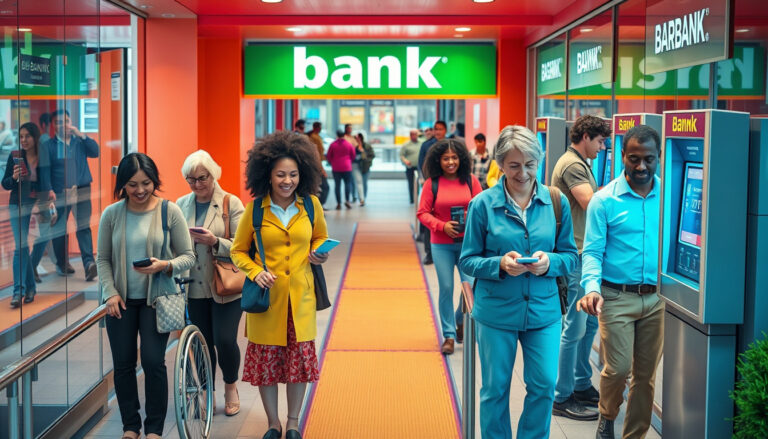As awareness of climate change intensifies, the call for sustainable living has never been louder.
One of the most promising solutions emerging in the real estate sector is the rise of carbon neutral properties.
These innovative homes not only minimize environmental impact but also pave the way for a greener future in urban living.
In this article, we will explore the concept of carbon neutrality in real estate, uncover the benefits for homeowners, and examine the advanced technologies that are powering this exciting trend.
Through case studies of successful carbon neutral communities, we will highlight the challenges they face and the ingenious solutions being implemented.
Finally, we will look ahead to the future of urban planning and the role that carbon neutral properties will play in creating sustainable, livable environments.


Innovative Technologies Driving Carbon Neutral Developments
In recent years, the demand for carbon neutral properties has surged, driven by an increasing awareness of climate change and the urgent need for sustainable living solutions.
Innovative technologies are at the forefront of this movement, enabling developers to create homes and commercial buildings that minimize carbon footprints and promote energy efficiency.
Smart home technologies, such as energy management systems and IoT devices, are now integral to carbon neutral properties, allowing homeowners to monitor and optimize their energy consumption.
Additionally, advancements in building materials, such as recycled and renewable resources, contribute to the sustainability of these developments.
Integrating renewable energy sources like solar panels and wind turbines further enhances the carbon neutrality of properties, ensuring they produce as much energy as they consume.
As consumers increasingly prioritize sustainability, the integration of these innovative technologies is not only beneficial for the environment but also enhances the value of carbon neutral properties in today’s real estate market.
Case Studies: Successful Carbon Neutral Communities
As the world places increasing emphasis on sustainability, numerous communities have emerged as shining examples of carbon neutrality.
These successful carbon neutral communities utilize innovative building techniques and renewable energy sources to create homes that not only minimize their environmental impact but also offer a high quality of life.
For instance, in Denmark, the town of Kalundborg has pioneered a cluster approach where local industries work together to reduce waste and emissions, resulting in sustainable carbon neutral properties that benefit both residents and the ecosystem.
Similarly, in the United States, the city of Aspen has committed to achieving 100% renewable energy usage, promoting the development of energy-efficient homes and carbon neutral properties that seamlessly blend with the stunning natural landscape.
These case studies not only highlight the importance of community engagement and forward-thinking policies but also serve as a blueprint for other regions eager to transition towards carbon neutrality.

Challenges and Solutions in Achieving Carbon Neutrality
Achieving carbon neutrality is critical for addressing climate change, and this goal is particularly relevant in the real estate sector, where the emphasis on carbon neutral properties is growing.
One of the primary challenges in this endeavor is the high upfront costs associated with green building initiatives and renewable energy installations.
While many property developers recognize the long-term savings and value appreciation linked to carbon neutral properties, the initial investment can be a significant barrier.
Moreover, there is often a lack of standardized metrics for measuring carbon emissions, making it difficult for investors and buyers to assess the carbon footprint of properties effectively.
To overcome these obstacles, stakeholders can explore various solutions, including government incentives for green building projects, access to low-interest loans for energy-efficient upgrades, and education programs aimed at raising awareness of the benefits of sustainable living.
By harnessing technology, such as smart building systems that optimize energy usage, property developers can create sustainable developments that not only meet market demands but also contribute to a healthier planet.
Collaboration among developers, local governments, and environmental organizations is also essential in creating a supportive framework for achieving carbon neutrality in the real estate sector.
The Future of Urban Planning and Sustainable Living
As cities around the world grapple with climate change, the future of urban planning is increasingly focused on sustainability, particularly in the realm of real estate development.
Carbon neutral properties are becoming a pivotal aspect of this movement, especially in places like Costa Rica, which has long been a leader in environmental preservation and sustainable living.
These innovative properties aim to balance the carbon emissions produced with an equal amount of carbon offset, ultimately achieving a net-zero carbon footprint.
This means not only minimizing the energy used in construction but also implementing green technologies such as solar panels, rainwater harvesting systems, and energy-efficient appliances.
As Costa Rica continues to attract eco-conscious buyers, the demand for carbon neutral properties is set to rise, making it an opportune time for investors to consider real estate in this beautiful country.
The integration of such properties into urban planning will not only enhance the quality of life for residents but also fortify the nation’s commitment to sustainability, showcasing how real estate can play an essential role in combating climate change.
Frequently Asked Questions
What are carbon neutral properties?
Carbon neutral properties are buildings designed to balance the amount of carbon dioxide they emit with the amount they offset, often achieving this through energy-efficient technologies and renewable energy sources.
What are the benefits of living in a carbon neutral property?
Living in a carbon neutral property often results in reduced utility bills, increased comfort, improved air quality, and a positive environmental impact, helping to combat climate change.
What innovative technologies are being used in carbon neutral developments?
Innovative technologies include solar panels, energy-efficient insulation, smart home systems, and advanced HVAC systems, all aimed at minimizing energy usage and maximizing renewable energy generation.
Can you provide examples of successful carbon neutral communities?
Yes, examples include the Vauban district in Germany and the Beddington Zero Energy Development (BedZED) in the UK, both of which showcase effective carbon neutral living through integrated design and community engagement.
What challenges are faced in achieving carbon neutrality in real estate?
Challenges include high upfront costs, lack of awareness and education about carbon neutrality, regulatory hurdles, and the need for collaboration among stakeholders in the construction and real estate sectors.





